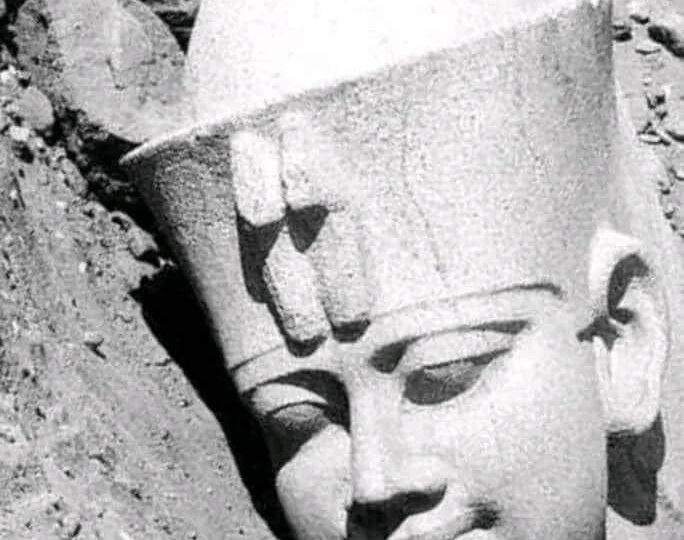History often turns its gaze toward Rome, Greece, and Egypt, leaving entire empires cloaked in obscurity. But every so often, we get to dust off the past and rediscover legends waiting patiently to be told. One such tale is that of Atlanirsa, a proud and powerful king from ancient Sudan—ruler of the Kushite Empire, heir to a dynasty of black pharaohs, and a leader of one of the most formidable civilizations the ancient world had ever seen.
Let’s step back to the seventh century BC, a time when two mighty forces towered above the world stage: the militaristic Assyrian Empire in Mesopotamia, and the Kingdom of Kush in Northeast Africa. Atlanirsa—son of Taharqa, grandson of Banakhi, and great-grandson of Kashta—carried the torch of Kushite supremacy after the death of his uncle, King Tanutamani.
But Atlanirsa wasn’t just a name in a dusty scroll or a half-erased cartouche etched in stone. By all accounts, he was charismatic, commanding, and known for his striking appearance—earning him the enduring moniker “The Handsome King.” But more than his looks, it was his leadership during a pivotal chapter in Kushite history that would leave an indelible mark on the legacy of Nubia.
The Golden Heart of Africa
The Kingdom of Kush—also called Nubia, Napata, Kerma, or Meroë depending on the era and region—was a treasure-rich land nestled along the Nile, just south of ancient Egypt. In fact, Kush was so intertwined with Egypt that its kings once ruled as Pharaohs during Egypt’s 25th Dynasty, a time often referred to as the Nubian Dynasty.
Gold was the lifeblood of Kush. The empire sat atop some of the richest gold mines in the known world. This abundance didn’t go unnoticed—Greek historians like Herodotus referred to the land south of Egypt as full of wonders and wealth. It’s no coincidence that “Nubia” may come from the Egyptian word nub, meaning gold.
Yet Kush was not merely a land of riches; it was a land of warriors, architects, philosophers, and kings who built sprawling cities, developed their own writing systems, and forged diplomatic ties from sub-Saharan Africa to the Mediterranean.
By the time Atlanirsa took the throne, Kush had already proven itself a force to be reckoned with.
Legacy of the Black Pharaohs
To understand Atlanirsa’s significance, it helps to understand the weight of the legacy he inherited.
His father, Taharqa, was arguably one of the greatest rulers of the 25th Dynasty. Taharqa defended Egypt and Kush against the ever-encroaching Assyrians and built grand temples, pyramids, and monuments across the Nile Valley. His reign is marked in both Egyptian and Kushite records as a golden era of unity and prosperity.
Taharqa’s brother, Tanutamani, tried valiantly to hold back the Assyrian tide after his sibling’s death. But by the time Atlanirsa came to power, the Assyrians were pressing ever harder into Egyptian territory, eventually pushing the Kushites out of Egypt altogether.
Atlanirsa’s task was monumental: defend the heart of Kush, preserve its autonomy, and rebuild its strength from Napata to Meroë.
Atlanirsa: King in a Time of Turmoil
Much of what we know about Atlanirsa comes from archaeological finds in Sudanese pyramids and temples. Though historical records from this period are fragmented, we can piece together a portrait of a ruler who stabilized his empire during one of its most vulnerable periods.
He likely ruled from Napata, a sacred city nestled beneath the cliffs of Jebel Barkal—a site considered the home of the gods in Kushite belief. Napata was not only a spiritual center but also a political powerhouse, and it served as the stage for Atlanirsa’s reign.
Although he did not recapture Egypt, Atlanirsa maintained the sovereignty of Kush and kept its traditions alive. He invested in rebuilding temples and preserving religious customs, reinforcing the Kushite belief that their kings were divine rulers chosen by Amun, the chief deity of the Nile Valley.
Atlanirsa also continued the architectural legacy of his forebears. He was buried in a pyramid at Nuri, a royal necropolis where many 25th Dynasty kings, including Taharqa, were laid to rest. These pyramids, though smaller than those in Giza, are steep and elegant—echoes of a distinct Nubian architectural style.
A Power to Rival Empires
It’s easy to forget just how advanced and influential Kush was during this era. While the Assyrians wielded iron and terror to conquer swathes of Asia, Kush commanded the southern Nile with gold, diplomacy, and religious might.
Trade routes stretched from Kush into Central Africa, Arabia, and the Mediterranean. Kushite warriors, adorned in gold and leopard skins, were known for their ferocity. Their archers were especially feared—the Assyrians called them “the bowmen of Kush.”
Politically, Kush was a marvel. While the Greek city-states squabbled and the Romans were barely a whisper of the future, the Kushites operated a centralized monarchy with a strong bureaucracy, military, and religious leadership.
Why We Remember Atlanirsa
In many ways, Atlanirsa’s reign marks the beginning of a transformation. While his predecessors fought to hold onto Egypt, he focused on cementing Kush’s own identity, independent of the Pharaohs to the north.
Though he may not be as well-known as Ramses or Cleopatra, Atlanirsa’s impact lies in his ability to hold together a mighty African kingdom in the face of overwhelming pressure from the world’s largest superpower. He reminded his people that Kush was more than a shadow of Egypt—it was a nation with its own soul, its own gods, and its own destiny.
And perhaps that’s what makes him truly handsome—not just his royal features or noble blood, but the dignity with which he carried his people through a turbulent chapter in their history.
Atlanirsa’s story is not just about royalty, war, or power—it’s about resilience, pride, and cultural legacy. The Kingdom of Kush stood tall in the ancient world, not as a footnote, but as a headline. It’s high time we gave it the spotlight it deserves.
So the next time you think of ancient civilizations that shaped our world, remember the handsome king of Kush—and the golden empire that once rivaled Assyria.

